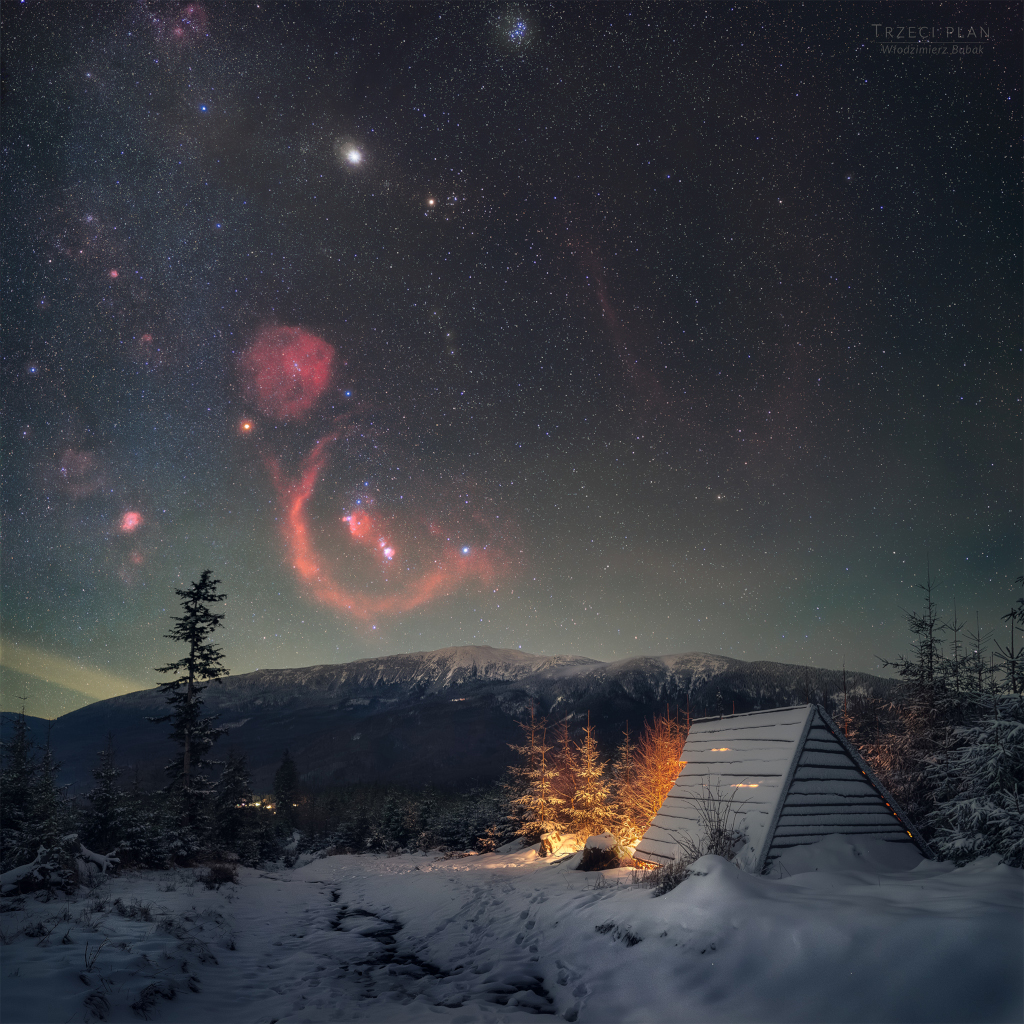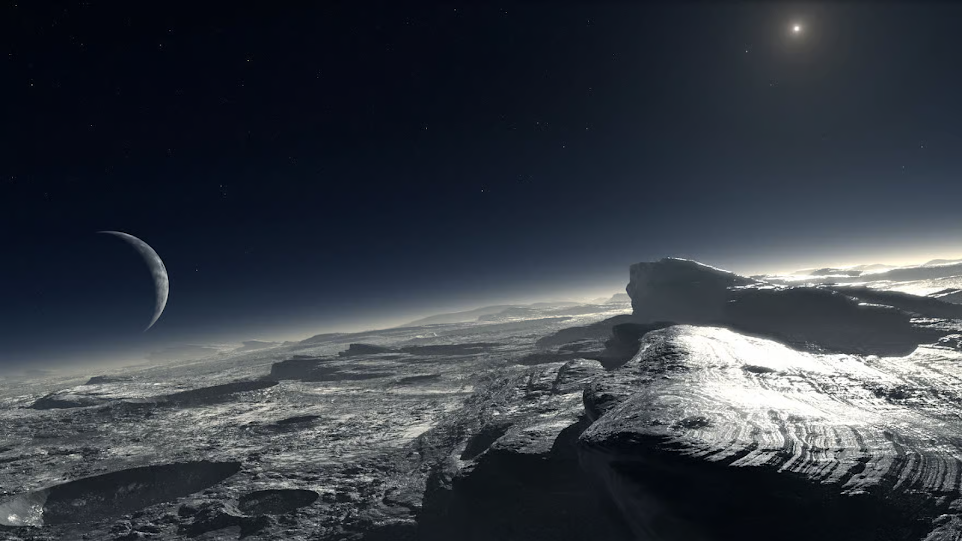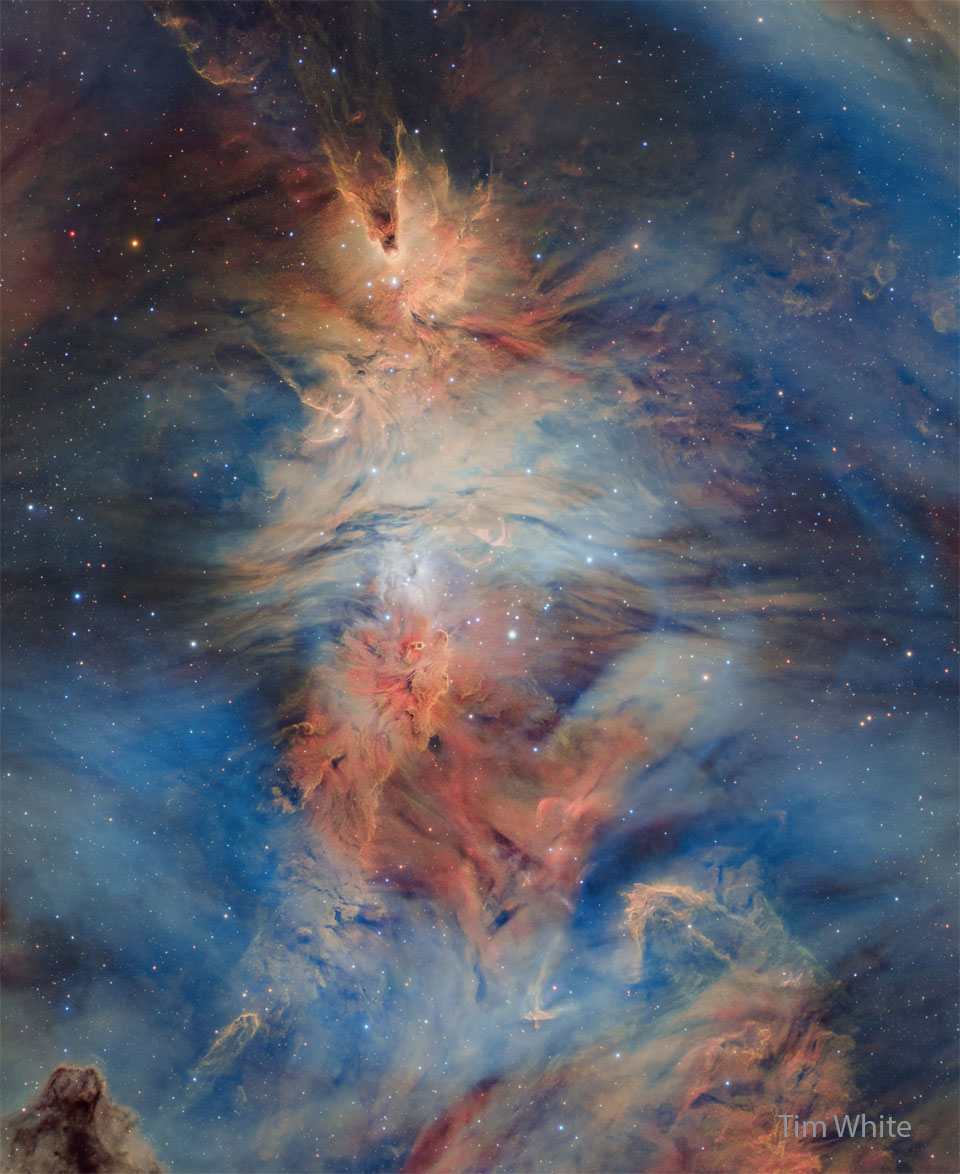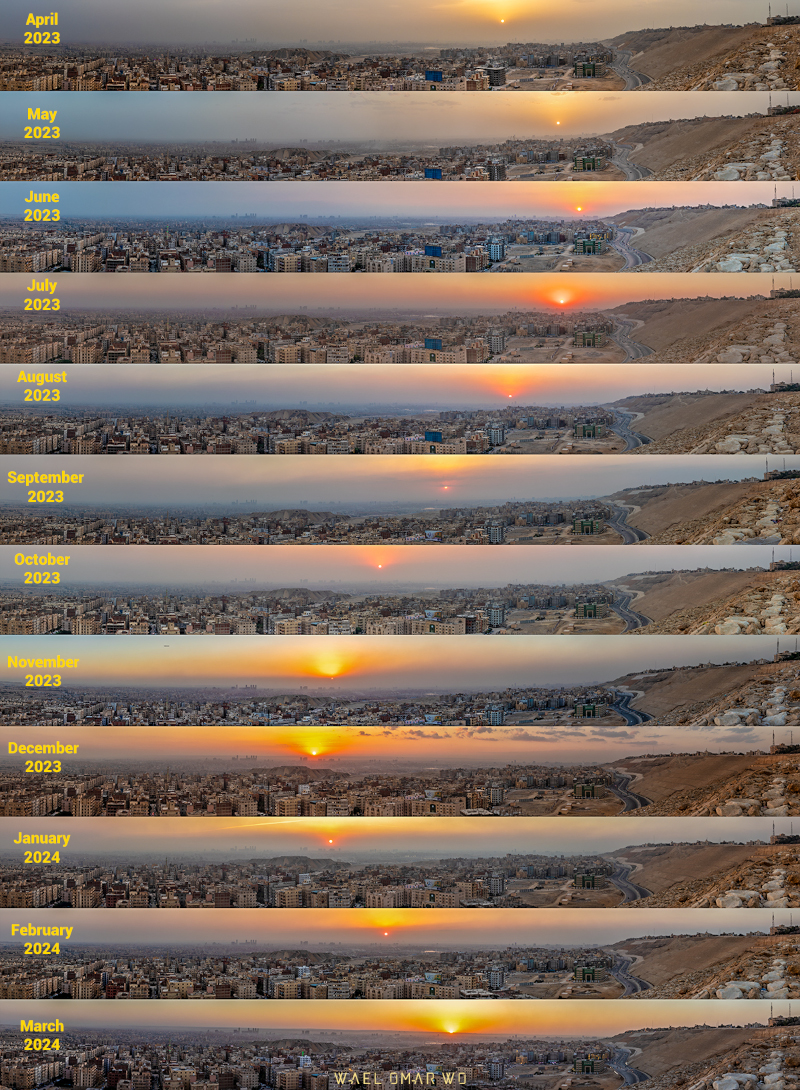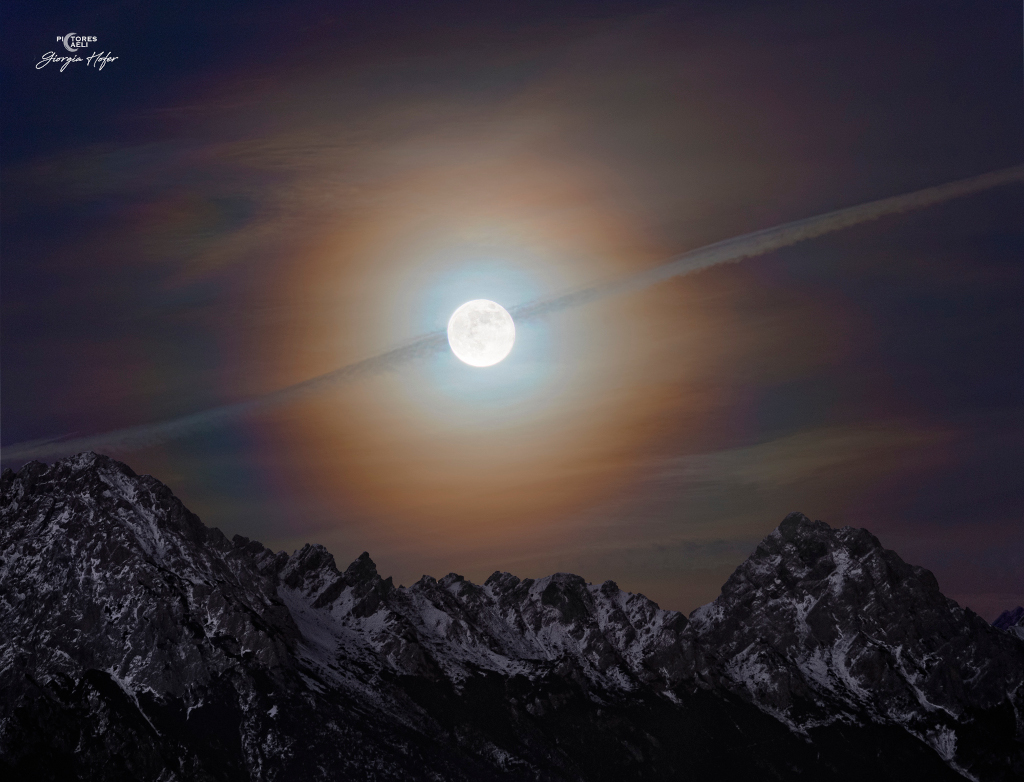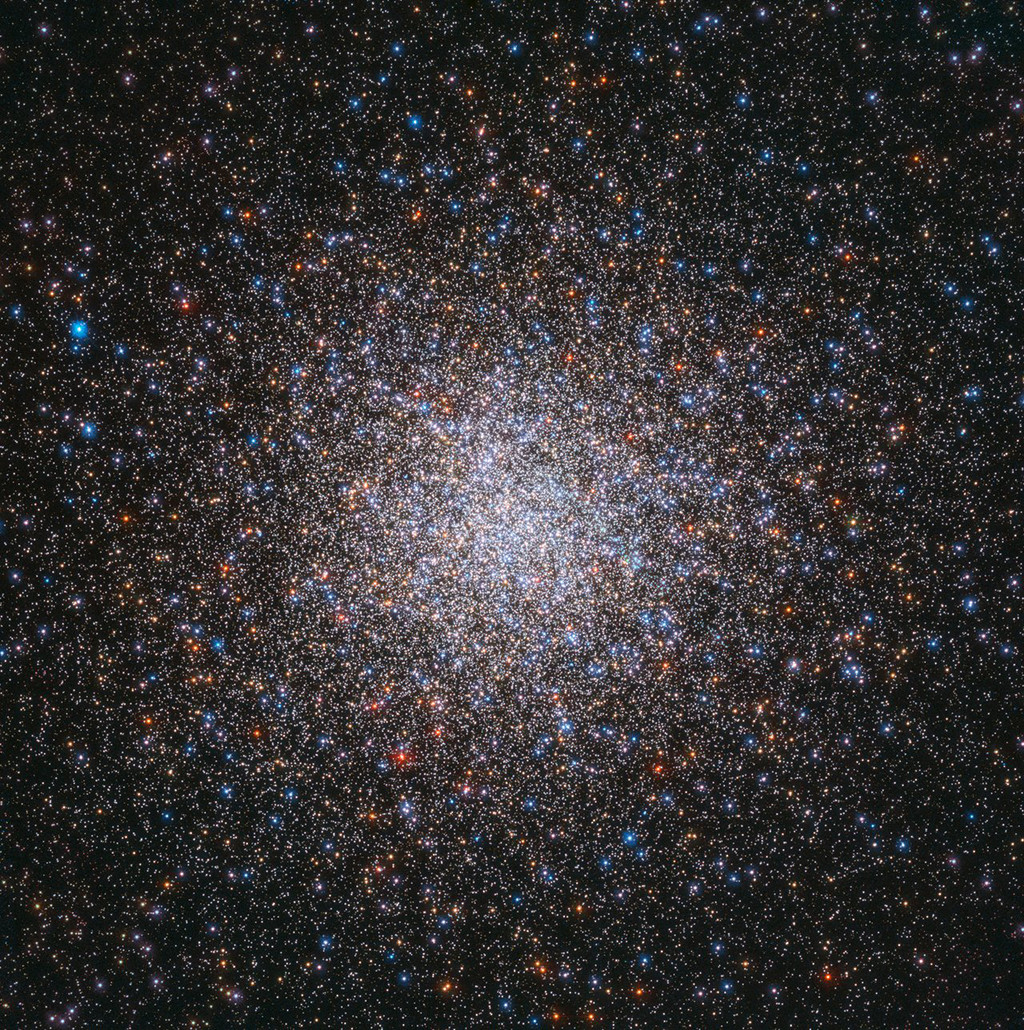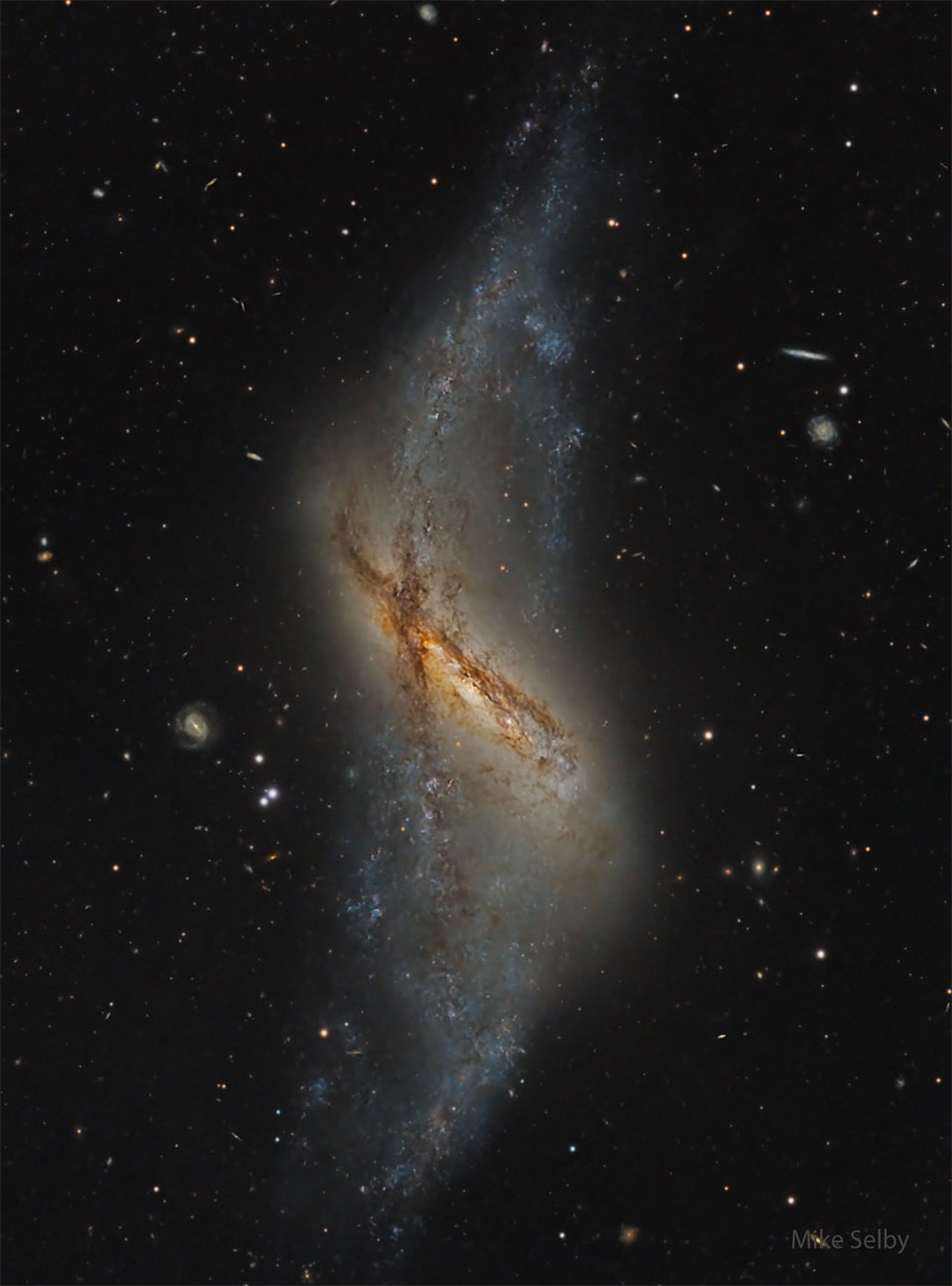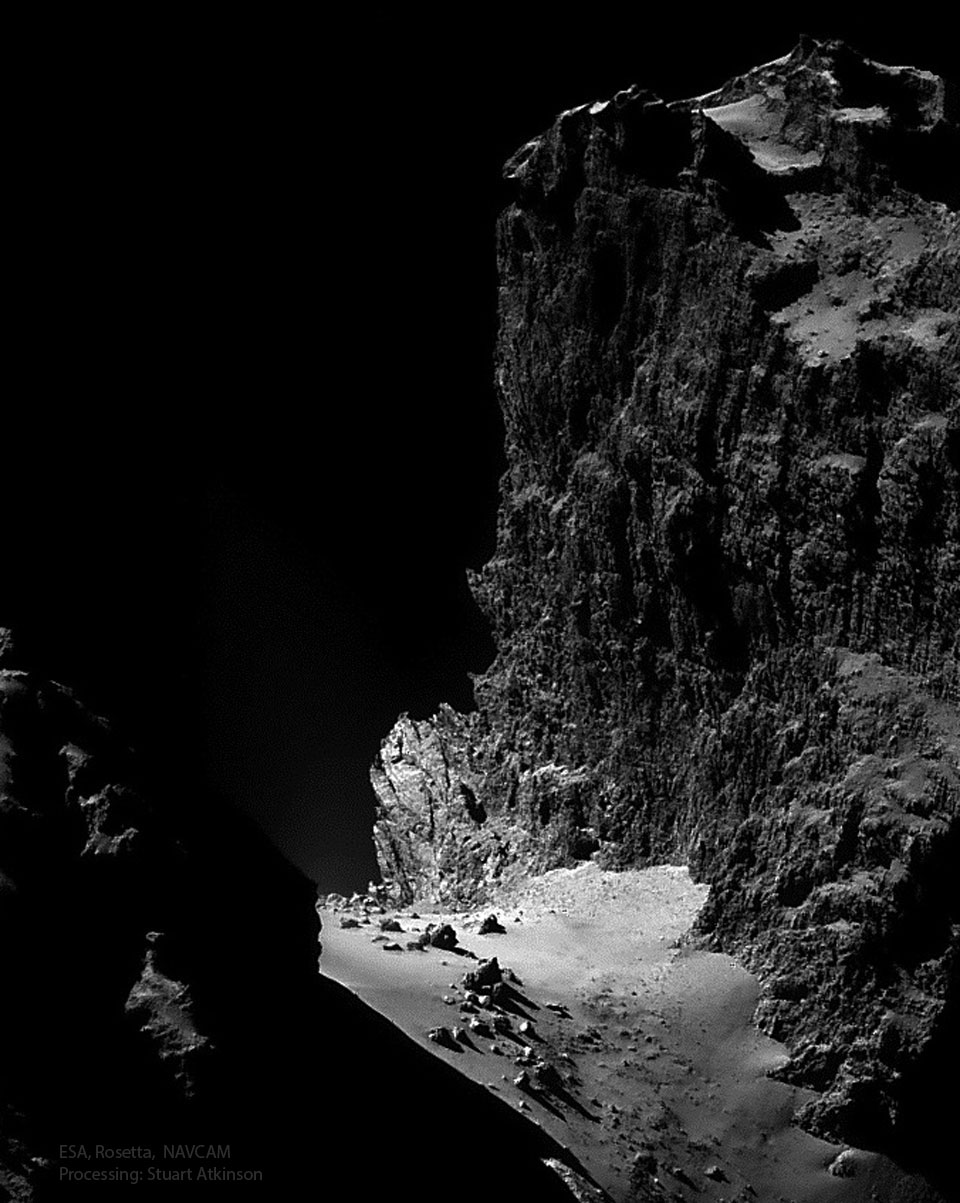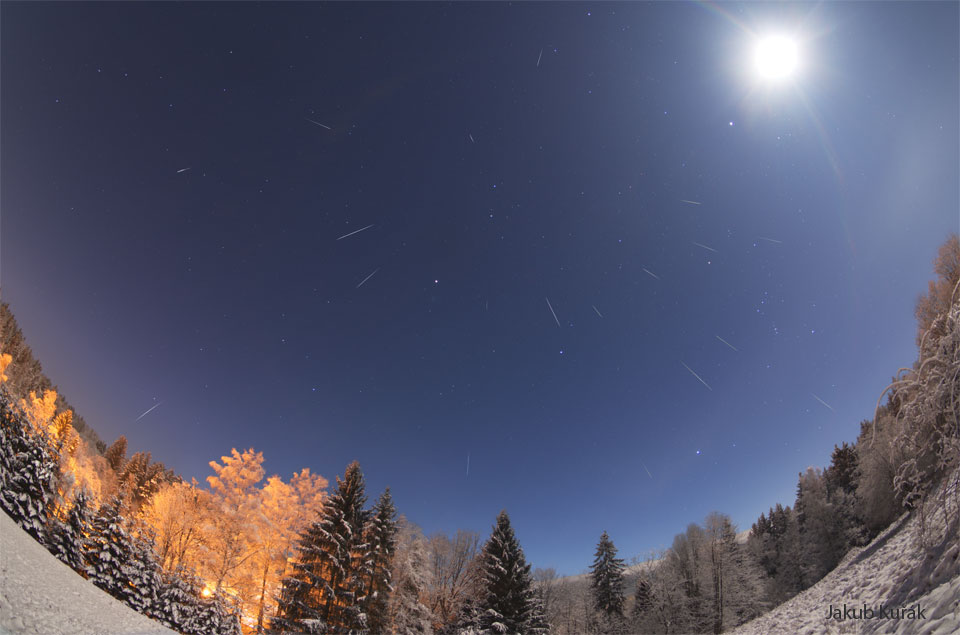Nombre total de pages vues
31/12/2024
ASTONOMIE - Les plus beaux astres de la Voie Lactée - Io : une lune de Jupiter
ASTRONOMY - The Twisted Disk of NGC 4753
2024 December 31
Image Credit: NASA, ESA, Hubble; Processing: Alexander Reinartz
Explanation: What do you think this is? Here’s a clue: it's bigger than a bread box. Much bigger. The answer is that pictured NGC 4753 is a twisted disk galaxy, where unusual dark dust filaments provide clues about its history. No one is sure what happened, but a leading model holds that a relatively normal disk galaxy gravitationally ripped apart a dusty satellite galaxy while its precession distorted the plane of the accreted debris as it rotated. The cosmic collision is hypothesized to have started about a billion years ago. NGC 4753 is seen from the side, and possibly would look like a normal spiral galaxy from the top. The bright orange halo is composed of many older stars that might trace dark matter. The featured Hubble image was recently reprocessed to highlight ultraviolet and red-light emissions.
30/12/2024
ASTRONOMIE - J 1214 b - une superterre inhabitée
ASTRONOMY - M27: The Dumbbell Nebula
2024 December 30
Image Credit & Copyright: Christopher Stobie
Explanation: Is this what will become of our Sun? Quite possibly. The first hint of our Sun's future was discovered inadvertently in 1764. At that time, Charles Messier was compiling a list of diffuse objects not to be confused with comets. The 27th object on Messier's list, now known as M27 or the Dumbbell Nebula, is a planetary nebula, one of the brightest planetary nebulas on the sky and visible with binoculars toward the constellation of the Fox (Vulpecula). It takes light about 1000 years to reach us from M27, featured here in colors emitted by sulfur (red), hydrogen (green) and oxygen (blue). We now know that in about 6 billion years, our Sun will shed its outer gases into a planetary nebula like M27, while its remaining center will become an X-ray hot white dwarf star. Understanding the physics and significance of M27 was well beyond 18th century science, though. Even today, many things remain mysterious about planetary nebulas, including how their intricate shapes are created.
29/12/2024
ASTRONOMY - Methane Bubbles Frozen in Lake Baikal
2024 December 29
Image Credit & Copyright: Kristina Makeeva
Explanation: What are these bubbles frozen into Lake Baikal? Methane. Lake Baikal, a UNESCO World Heritage Site in Russia, is the world's largest (by volume), oldest, and deepest lake, containing over 20% of the world's fresh water. The lake is also a vast storehouse of methane, a greenhouse gas that, if released, could potentially increase the amount of infrared light absorbed by Earth's atmosphere, and so increase the average temperature of the entire planet. Fortunately, the amount of methane currently bubbling out is not climatologically important. It is not clear what would happen, though, were temperatures to significantly increase in the region, or if the water level in Lake Baikal were to drop. Pictured, bubbles of rising methane froze during winter into the exceptionally clear ice covering the lake.
28/12/2024
ASTRONOMIE - GJ 1214 b : une superterre inhabitée
ASTRONOMY - A December Winter Night
2024 December 28
Image Credit & Copyright: Włodzimierz Bubak
Explanation: Orion seems to come up sideways, climbing over a distant mountain range in this deep skyscape. The wintry scene was captured from southern Poland on the northern hemisphere's long solstice night. Otherwise unseen nebulae hang in the sky, revealed by the camera modified to record red hydrogen-alpha light. The nebulae lie near the edge of the Orion molecular cloud and join the Hunter's familiar belt stars and bright giants Betelgeuse and Rigel. Eye of Taurus the Bull, yellowish Aldebaran anchors the V-shaped Hyades star cluster near top center. Still, near opposition in planet Earth's sky, the Solar System's ruling gas giant Jupiter is the brightest celestial beacon above this horizon's snowy peaks.
27/12/2024
ASTRONOMIE - Les plus beaux astres de la Voie Lactée - Vénus - l’étoile du Berger
ASTRONOMY - Planet Earth at Twilight
2024 December 27
Image Credit: ISS Expedition 2 Crew, Gateway to Astronaut Photography of Earth, NASA
Explanation: No sudden, sharp boundary marks the passage of day into night in this gorgeous view of ocean and clouds over our fair planet Earth. Instead, the shadow line or terminator is diffuse and shows the gradual transition to darkness we experience as twilight. With the Sun illuminating the scene from the right, the cloud tops reflect gently reddened sunlight filtered through the dusty troposphere, the lowest layer of the planet's nurturing atmosphere. A clear high altitude layer, visible along the dayside's upper edge, scatters blue sunlight and fades into the blackness of space. This picture was taken from the International Space Station orbiting at an altitude of 211 nautical miles. Of course from home, you can check out the Earth Now.
26/12/2024
ASTRONOMIE - Les plus beaux astres de la Voie Lactée - L’imposant maître Soleil
ASTRONOMY - Grand Spiral NGC 5643
Image Credit: ESA / Hubble & NASA
Explanation: Viewed face-on, grand spiral galaxy NGC 5643 has a festive appearance in this colorful cosmic portrait. Some 55 million light-years distant, the galaxy extends for over 100,000 light-years, seen within the boundaries of the southern constellation Lupus. Its inner 40,000 light-years are shown in sharp detail in this composite of Hubble Space Telescope image data. The galaxy's magnificent spiral arms wind from a yellowish central region dominated by light from old stars, while the spiral arms themselves are traced by dust lanes, young blue stars and reddish star forming regions. The bright compact core of NGC 5643 is also known as a strong emitter of radio waves and X-rays. In fact, NGC 5643 is one of the closest examples of the Seyfert class of active galaxies, where vast amounts of dust and gas are thought to be falling into a central massive black hole.
25/12/2024
LES PLUS BEAUX ASTRES DE LA VOIE LACTéE - Pluton : la planète naine
ASTRONOMY - Diamond Dust Sky Eye
Image Credit & Copyright: Jaroslav Fous
Explanation: Why is there a huge eye in the sky? Diamond dust. That is an informal term for small ice crystals that form in the air and flitter to the ground. Because these crystals are geometrically shaped, they can together reflect light from the Sun or Moon to your eyes in a systematic way, causing huge halos and unusual arcs to appear. And sometimes, together the result can seem like a giant eye looking right back at you. In the featured image taken in the Ore Mountains of the Czech Republic last week, a bright Moon rising through ice fog-filled air resulted in many of these magnificent sky illusions to be visible simultaneously. Besides Moon dogs, tangent arcs, halos, and a parhelic circle, light pillars above distant lights are visible on the far left, while Jupiter and Mars can be found just inside the bottom of the 22-degree halo.
24/12/2024
ASTRONOMY - Fox Fur, Cone, and Christmas Tree
2024 December 24
Image Credit & Copyright: Tim White
Explanation: What do the following things have in common: a cone, the fur of a fox, and a Christmas tree? Answer: they all occur in the constellation of the Unicorn (Monoceros). Considered as a star forming region and cataloged as NGC 2264, the complex jumble of cosmic gas and dust is about 2,700 light-years distant and mixes reddish emission nebulae excited by energetic light from newborn stars with dark interstellar dust clouds. The featured image spans an angle larger than a full moon, covering over 50 light-years at the distance of NGC 2264. Its cast of cosmic characters includes the Fox Fur Nebula, whose convoluted pelt lies just to the left of the image center, bright variable star S Mon visible just to the right of the Fox Fur, and the Cone Nebula near the image top. With the Cone Nebula at the peak, the shape of the general glow of the region give it the nickname of the Christmas Tree Cluster, where stars are tree ornaments.
23/12/2024
ASTRONOMY - Christmas Tree Aurora
2024 December 23
Image Credit & Copyright: Jingyi Zhang
Explanation: It was December and the sky lit up like a Christmas tree. Shimmering, the vivid green, blue, and purple auroral colors that formed the tree-like apparition were caused by high atmospheric oxygen and nitrogen reacting to a burst of incoming electrons. Collisions caused the orbital electrons of atoms and molecules to jump into excited energy states and emit visible light when returning to their normal state. The featured image was captured in Djúpivogur, Iceland during the last month of 2023. Our Sun is currently in its most energetic phase of its 11-year cycle, with its high number of active regions and sunspots likely to last into next year. Of course, the Sun has been near solar maximum during this entire year, with its outbursts sometimes resulting in spectacular Earthly auroras.
22/12/2024
ASTRONOMIE - LES PLUS BEAUX ASTRES DE LA VOIE LACTéE - Antiope : l’astéroïde double
SANTé/MEDECINE - LES INGREDIENTS A BANNIR AU SUPERMARCHé - Les nitrites et nitrates
ASTRONOMY - The Local Fluff
2024 December 22
Illustration Credit: NASA, SVS, Adler, U. Chicago, Wesleyan
Explanation: The stars are not alone. In the disk of our Milky Way Galaxy, about 10 percent of visible matter is in the form of gas called the interstellar medium (ISM). The ISM is not uniform and shows patchiness even near our Sun. It can be quite difficult to detect the local ISM because it is so tenuous and emits so little light. This mostly hydrogen gas, however, absorbs some very specific colors that can be detected in the light of the nearest stars. A working map of the local ISM within 20 light-years, based on ongoing observations and particle detections from the Earth-orbiting Interstellar Boundary Exporer satellite (IBEX), is shown here. These observations indicate that our Sun is moving through a Local Interstellar Cloud as this cloud flows outwards from the Scorpius-Centaurus Association star forming region. Our Sun may exit the Local Cloud, also called the Local Fluff, during the next 10,000 years. Much remains unknown about the local ISM, including details of its distribution, its origin, and how it affects the Sun and the Earth. Unexpectedly, IBEX spacecraft measurements indicate that the direction from which neutral interstellar particles flow through our Solar System is changing.
21/12/2024
ASTRONOMY - A Year in Sunsets
2024 December 21
Image Credit & Copyright: Wael Omar
Explanation: A year in sunsets, from April 2023 to March 2024, track along the western horizon in these stacked panoramic views. The well-planed sequence is constructed of images recorded near the 21st day of the indicated month from the same location overlooking Cairo, Egypt. But for any location on planet Earth the yearly extreme northern (picture right) and southern limits of the setting Sun mark the solstice days. The word solstice is from Latin for "Sun" and "stand still". On the solstice date the seasonal drift of the Sun's daily path through the sky appears to pause and reverse direction in its annual celestial journey. Of course the Sun reaches a stand still on today's date. The 21 December 2024 solstice at 09:21 UTC is the moment of the Sun's southernmost declination, the start of astronomical winter in the north and summer in the south.
20/12/2024
ASTRONOMIE - Collision entre deux planètes naines
SANTé/MEDECINE - Le Remède de Grand-Mère Efficace Contre l'Arthrose - les Rhumatismes et les Douleurs Articulaires.
ASTRONOMY - The Long Night Moon
Image Credit & Copyright: Giorgia Hofer and Dario Giannobile (Pictores caeli)
Explanation: On the night of December 15, the Full Moon was bright. Known to some as the Cold Moon or the Long Night Moon, it was the closest Full Moon to the northern winter solstice and the last Full Moon of 2024. This Full Moon was also at a major lunar standstill. A major lunar standstill is an extreme in the monthly north-south range of moonrise and moonset caused by the precession of the Moon's orbit over an 18.6 year cycle. As a result, the full lunar phase was near the Moon's northernmost moonrise (and moonset) along the horizon. December's Full Moon is rising in this stacked image, a composite of exposures recording the range of brightness visible to the eye on the northern winter night. Along with a colorful lunar corona and aircraft contrail this Long Night Moon shines in a cold sky above the rugged, snowy peaks of the Italian Dolomites.
19/12/2024
ASTRONOMIE - Les plus beaux astres de la Voie Lactée - La petite Mercure
SANTé/MEDECINE - Le cancer du sein - Herceptin et lapatinib. un duo gagnant ?
ASTRONOMY - Messier 2
2024 December 19
Image Credit: ESA/Hubble & NASA, G. Piotto et al.
Explanation: After the Crab Nebula, this giant star cluster is the second entry in 18th century astronomer Charles Messier's famous list of things that are not comets. M2 is one of the largest globular star clusters now known to roam the halo of our Milky Way galaxy. Though Messier originally described it as a nebula without stars, this stunning Hubble image resolves stars across the cluster's central 40 light-years. Its population of stars numbers close to 150,000, concentrated within a total diameter of around 175 light-years. About 55,000 light-years distant toward the constellation Aquarius, this ancient denizen of the Milky Way, also known as NGC 7089, is 13 billion years old. An extended stellar debris stream, a signature of past gravitational tidal disruption, was recently found to be associated with Messier 2.
18/12/2024
SANTé/MEDECINE - Le cancer du sein - HER2+, un récepteur surexprimé dans certains cancers du sein
ASTRONOMIE - Les plus beaux astres de La Voie Lactée - HD 188753 : en orbite dans un système stellaire triple
SANTé/MEDECINE - Les aliments à banir au Supermarché - Les graisses végétales hydrogénées : un piège pour votre cœur
ASTRONOMY - NGC 660: Polar Ring Galaxy
2024 December 18
Image Credit & Copyright: Mike Selby
Explanation: What kind of strange galaxy is this? This rare structure is known as a polar ring galaxy, and it seems to have two different rings of stars. In this galaxy, NGC 660, one ring of bright stars, gas, and dark dust appears nearly vertical, while another similar but shorter ring runs diagonally from the upper left. How polar ring galaxies obtain their striking appearance remains a topic of research, but a leading theory holds that it is usually the result of two galaxies with different central ring planes colliding. NGC 660 spans about 50,000 light years and is located about 40 million light years away toward the constellation of the Fish (Pisces). The featured image was captured recently from Observatorio El Sauce in Chile.
17/12/2024
ASTRONOMY - Near to the Heart Nebula
2024 December 17
Image Credit & Copyright: Jeff Horne & Drew Evans
Explanation: What excites the Heart Nebula? First, the large emission nebula on the upper left, catalogued as IC 1805, looks somewhat like a human heart. The nebula glows brightly in red light emitted by its most prominent element, hydrogen, but this long-exposure image was also blended with light emitted by sulfur (yellow) and oxygen (blue). In the center of the Heart Nebula are young stars from the open star cluster Melotte 15 that are eroding away several picturesque dust pillars with their atom-exciting energetic light and winds. The Heart Nebula is located about 7,500 light years away toward the constellation of Cassiopeia. This wide field image shows much more, though, including the Fishhead Nebula just below the Heart, a supernova remnant on the lower left, and three planetary nebulas on the image right. Taken over 57 nights, this image is so deep, though, that it clearly shows fainter long and complex filaments.
16/12/2024
ASTRONOMIE - Les plus beaux astres de La Voie Lactée - Hypérion : une lune de Saturne
SANTé/MEDECINE - Les aliments à banir au Supermarché - Le sirop de glucose-fructose
ASTRONOMY - A Kilometer High Cliff on Comet Churyumov - Gerasimenko
2024 December 16
Image Credit & Licence (CC BY-SA 3.0 IGO): ESA, Rosetta spacecraft, NAVCAM; Additional Processing: Stuart Atkinson
Explanation: This kilometer high cliff occurs on the surface of a comet. It was discovered on the dark nucleus of Comet Churyumov - Gerasimenko (CG) by Rosetta, a robotic spacecraft launched by ESA, which orbited the comet from 2014 to 2016. The ragged cliff, as featured here, was imaged by Rosetta early in its mission. Although towering about one kilometer high, the low surface gravity of Comet CG would likely make a jump from the cliffs by a human survivable. At the foot of the cliffs is relatively smooth terrain dotted with boulders as large as 20 meters across. Data from Rosetta indicates that the ice in Comet CG has a significantly different deuterium fraction -- and hence likely a different origin -- than the water in Earth's oceans. The probe was named after the Rosetta Stone, a rock slab featuring the same text written in three different languages that helped humanity decipher ancient Egyptian writing.
15/12/2024
ASTRONOMIE - Les plus beaux astres de la Voie Lactée - L’exoplanète Corot-7b
ASTRONOMY - Gemini Meteors over a Snowy Forest
2024 December 15
Image Credit & Copyright: Jakub Kuřák
Explanation: Meteors have been flowing out from the constellation Gemini. This was expected, as mid-December is the time of the Geminid Meteor Shower. Pictured here, over two dozen meteors were caught in successively added exposures taken over several hours early Saturday morning from a snowy forest in Poland. The fleeting streaks were bright enough to be seen over the din of the nearly full Moon on the upper right. These streaks can all be traced back to a point on the sky called the radiant toward the bright stars Pollux and Castor in the image center. The Geminid meteors started as sand sized bits expelled from asteroid 3200 Phaethon during its elliptical orbit through the inner Solar System.
14/12/2024
ASTRONOMIE - Les plus beaux astres de la Voie Lactée - Encelade : satellite de Saturne
ASTRONOMY - Apollo 17's Moonship
2024 December 14
Image Credit: Apollo 17, NASA, (Image Reprocessing: Andy Saunders)
Explanation: Awkward and angular looking, Apollo 17's lunar module Challenger was designed for flight in the near vacuum of space. Digitally enhanced and reprocessed, this picture taken from Apollo 17's command module America shows Challenger's ascent stage in lunar orbit. Small reaction control thrusters are at the sides of the moonship with the bell of the ascent rocket engine underneath. The hatch allowing access to the lunar surface is seen at the front, with a round radar antenna at the top. Mission commander Gene Cernan is clearly visible through the triangular window. This spaceship performed gracefully, landing on the Moon and returning the Apollo astronauts to the orbiting command module in December of 1972. So where is Challenger now? Its descent stage remains at the Apollo 17 landing site in the Taurus-Littrow valley. The ascent stage pictured was intentionally crashed nearby after being jettisoned from the command module prior to the astronauts' return to planet Earth.
13/12/2024
SANTé/MEDECINE - Les effets terrifiants du stress - Effets sur le système immunitaire
ASTRONOMY - Juno Flyby of Ganymede and Jupiter
2025 December 14 Juno Flyby of Ganymede and Jupiter Video Credit: NASA , JPL-Caltech , SWRI , MSSS ; Animation: Koji Kuramura , Geral...

-
2022 September 26 All the Water on Planet Earth Illustration Credit: Jack Cook, Adam Nieman, Woods Hole Oceanographic Institution ; Data ...
-
2025 May 11 The Surface of Venus from Venera 14 Image Credit: Soviet Planetary Exploration Program , Venera 14 ; Processing & Copyri...






